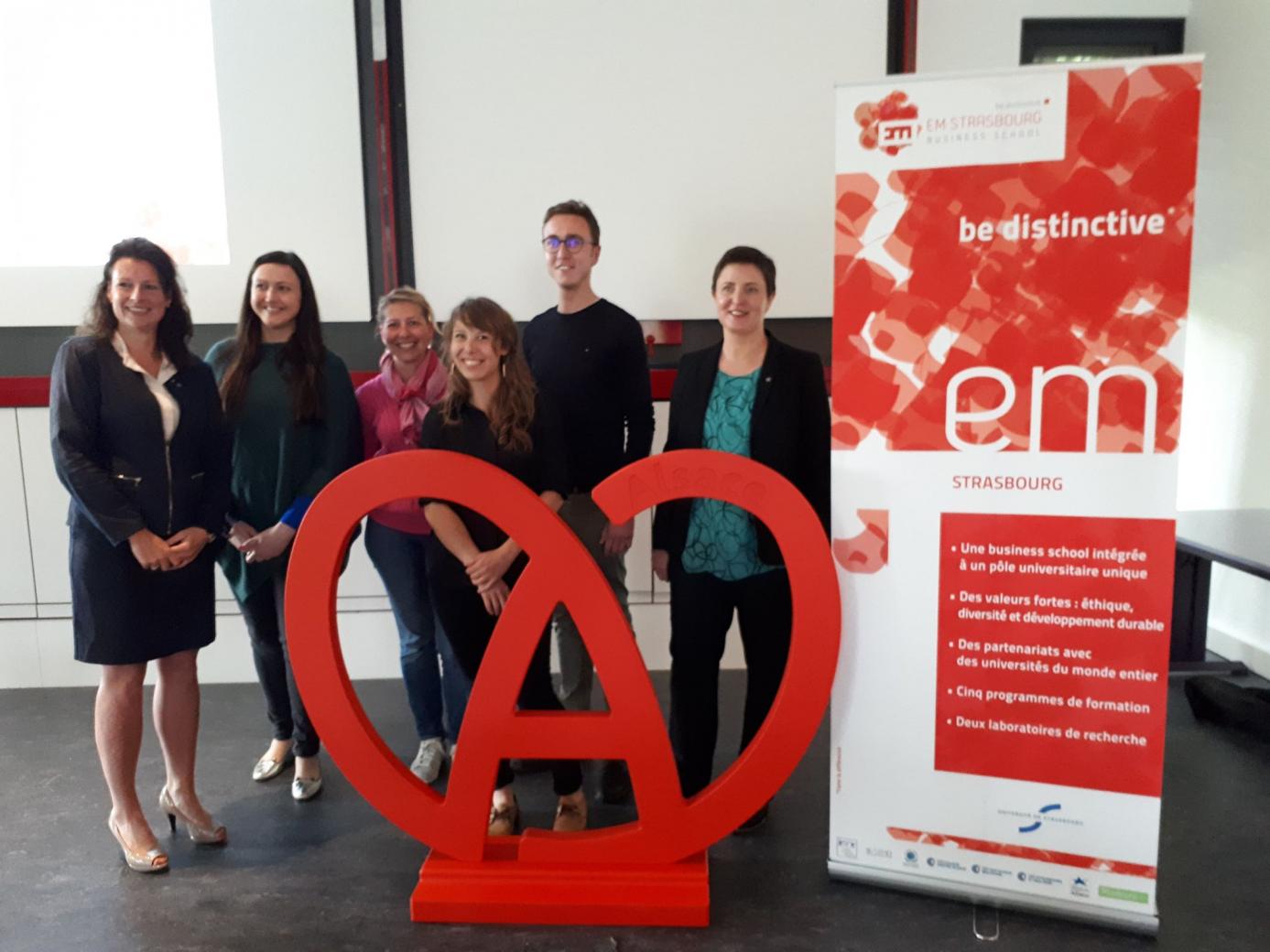
With an outstanding wine-growing heritage, exceptional landscapes, and wines, Alsace has the ingredients to be a major wine tourism destination. It still lacks a touch of innovation, originality, and coordination to accelerate in a growing market. But with the younger generation of winegrowers arriving, things could change. EM Strasbourg took stock of the situation on this subject during a conference forming part of the Wine Management cycle which was held in the premises of its partner, the Alsace Attractiveness Agency, in Colmar.
Some are barely 30 years old and have just joined centuries-old family estates. Apart from the fact that they are the inheritants of great names in Alsatian winemaking, what they have in common is that they have taken the time to travel before settling down. “We are perhaps the first generation to have done so”, testifies Anaïs Cattin, co-director of the Vœgtlinshoffen estate, herself having passed through California, South Africa, Australia, the United States... The New World where product and tourist innovation gives pride of place to uncomplicated marketing and a more accessible relationship with wine. There are beautiful ideas to be taken up from these countries and adapted to Alsace to reinforce its wine tourism attractiveness.
Stimulating the Senses
Isabelle Hess-Misslin, a graduate of the Master of Tourism Management at EM Strasbourg Business School has carried out an in-depth study of the wine tourism experience in Alsace. It shows that ahead of wine, the authenticity of the villages and the beauty of the landscapes are determining factors in the choices made by visitors. By using the customer experience lever, winegrowers have at their disposal a formidable tool to better enhance the value of their wines. On the ground, “Stimulating the senses is the key to forging a memory and building customer loyalty”, she continues. This has been well understood by the New World countries. Several areas of the region have gotten the measure of this challenge and have invested in projects inspired by initiatives observed abroad. This ranges from relatively simple and inexpensive things to much larger investments that can attract a wider customer base and bring them to your estate. Anne-Céline Lemberger, a graduate of the PGEspecializing in International Wine Management and Tourism at EM Strasbourg, shares some of the simplest things from her experience in South Africa: “Some wineries have developed the Wine on Tap concept, which consists of tasting the wine directly from the barrels or vats”. A truly memorable experience for tourists.
“Stimulating the senses is the key to forging a memory and building customer loyalty.”
Isabelle Hess-Misslin
Creating the Event
Ludovic Hauller, from the Hauller estate in Dambach-la-Ville, notes the ability of the Castello di Amorosa estate in California to create unique events that were sold at a high price to customers, in keeping with the excesses of this castle. Last year, Hauller launched his own event at the estate in July 2015, the “Olejito Beach Party”, the aim of which was to bring in people and promote a new product: a sparkling wine scented with Mojito. Always innovating! It was a huge success with 200 people at the first edition, and a strong demand to hold the event again, which now welcomes nearly 500 participants. Another noteworthy initiative was the acquisition of an old retro truck repainted in the estate's colours. This ‘Wine truck’ appears at a large number of events in the region to introduce Hauller wines.
The Importance of Real Estate
But at Hauller, as in other areas, it is also the real estate and the infrastructure that determine the attractiveness of the houses. There are several challenges: how do you enhance the value of a heritage that is full of history without distorting it? How do you pay tribute to the terroir and the surrounding landscapes? Finally, how do you tell the story of the winegrower's profession through these buildings by drawing on the visitors’ senses? Ludovic Hauller, Anaïs Cattin, and Céline Zeyssolff (in Gertwiller), who represent three areas that have undertaken major investments in recent years, are all working on these issues. At Hauller's estate, the family's history around the cooperage trade will soon be highlighted through a small dedicated museum in the estate's historic house in the heart of Dambach, not forgetting that a contemporary building was built in the ground in 2014 to better welcome the public.
“Since November 2017, the Belvedere allows us to welcome the public and also host events (culinary, artistic...) by taking advantage of Vœgltinshoffen's greatest asset, its view! ” says Anaïs Cattin. A transparent building which opens onto the cellars where the senses are awakened by the choice of materials, yellow sandstone and wood, and by the choice of local specialities accompanying tastings of the house wines. For her part, Céline Zeyssolff recounts how the family estate has become a place offering a variety of experiences: “A delicatessen, a tea room, an ‘eat-in’ bar for customers to take their time, and also 5 gîtes that sleep 28 people in total, all this allows us to diversify our clientele! ”. These initiatives promote a rare wine tourism heritage. All that remains is to convince a greater number of winegrowers and to bring together initiatives to consolidate the image of Alsace, its exceptional white wines, and its wine route. “And why not design an experience center for Alsace wines and wine tourism? ”. That’s the final thought from Isabelle Hess-Misslin and Coralie Haller, Head of the Wine Management & Tourism Chair at EM Strasbourg.
